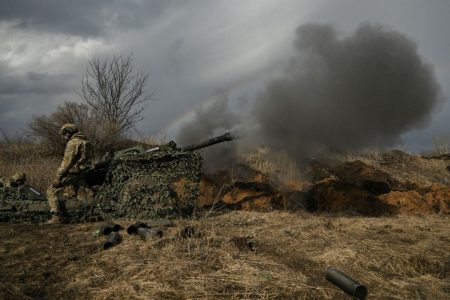on Security and Defense Council Oleksiy Danilov suggested that Ukraine is considering following the model of West Germany’s reunification after the fall of the Berlin Wall in the late 1980s. This model would involve international guarantees for Ukraine’s security, similar to the ones provided to West Germany after World War II. However, experts have raised concerns about the feasibility of implementing such a model in the current geopolitical climate.
The West Germany model for Ukraine peace would likely involve a combination of security guarantees, economic support, and political integration to ensure Ukraine’s sovereignty and territorial integrity. This approach would require the involvement of key international stakeholders, including NATO and the European Union, to provide the necessary support for Ukraine’s transition and integration process. However, the ongoing military conflict in eastern Ukraine, fueled by Russian aggression, poses a significant challenge to achieving peace and stability in the region.
Despite Ukraine’s efforts to seek membership in NATO and present a victory plan to end Russia’s war, the situation remains precarious as Russian forces continue to advance in eastern Ukraine. The upcoming U.S. presidential election also raises concerns about the future of U.S. support for Ukraine, as President Donald Trump’s administration has shown a willingness to prioritize diplomatic relations with Russia over supporting Ukraine’s security interests. This uncertainty adds further pressure on Ukraine to seek decisive action and international support to end the conflict.
President Volodymyr Zelensky’s five-step victory plan includes military, economic, political, and diplomatic measures aimed at pressuring Russia to end its war in Ukraine. The plan also calls for permission to strike military targets deep inside Russian territory using long-range missile systems provided by Ukraine’s partners, such as ATACMS and Storm Shadow missiles. By escalating pressure on Russia, Ukraine hopes to weaken Russian forces and change President Vladimir Putin’s strategic calculations, ultimately leading to a peaceful resolution of the conflict.
The success of Ukraine’s victory plan hinges on international support from Western powers and key allies, who have been urged to take decisive action to bring Russia’s war to an end by next year. Without further aid and assistance, Ukraine warns that the conflict could drag on for years, undermining Western global standing and emboldening Putin to seek full control over the country. As Ukraine continues to face military aggression and territorial threats from Russia, the need for a comprehensive and coordinated strategy to end the conflict remains critical to ensuring peace and stability in the region.
In conclusion, Ukraine’s pursuit of the West Germany model for peace and security reflects its commitment to seeking international support and assistance in resolving the ongoing conflict with Russia. The implementation of President Zelensky’s victory plan, combined with efforts to join NATO and engage with key allies, underscores Ukraine’s determination to protect its sovereignty and territorial integrity. However, the challenges of navigating complex geopolitical dynamics and addressing Russian aggression highlight the importance of sustained international cooperation and solidarity in supporting Ukraine’s quest for peace and stability in the region.















